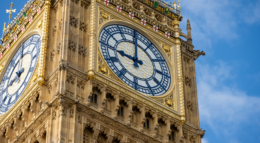
If allowed, the private sector can finance an energy efficiency revolution in our schools
As the testing problems at the beginning of the COVID crisis showed, solutions to national issues are best delivered by the public and private sectors working together, argues Harvey Sinclair
In his summer statement, Rishi Sunak announced £1 billion of grants to make our public sector buildings such as schools and hospitals more energy efficient. The attraction is undeniable. Save money and cut carbon. For example, LED lighting can reduce the cost of lighting a classroom from £400 per year to £100, stop millions of tonnes unnecessary carbon hitting the atmosphere, as well as producing a more conducive learning environment.
The problem is that £1 billion is too small to achieve much. Even if you focused it all on the state school sector, it equates to around £45,000 per school. Installing LED lighting at an average secondary school costs £150,000. 80% of state schools haven't switched due to the expense.
The good news is that there are billions in ESG funds that want to help fund energy efficiency projects. However, to allow the cash-strapped education sector to benefit, procurement rules need to be modernised.
At the heart of the Government's problem is that it sees energy efficiency projects like LED lighting or better boilers as a capital investment. It offers grants or interest-free loans to be used towards the cost. The given amount means that the school still needs to find the rest of the money from a cash-constrained budget. The process to get the grant is often bureaucratic and slow.
The Government needs to start looking at energy efficiency as a cash generator. By using the "as a service model", the capital investment can be moved to the private sector. For example, the independent school system is rapidly embracing the concept of "light as a service" (LaaS). With lighting making up 50% of a school's electricity bill, this is often the first place to start when looking for savings.
LaaS businesses like mine supply and install the LED lighting using local contractors. The school pays nothing upfront but instead pays a monthly fee which is more than covered by the energy savings. Schools free up cash from day one. We have access to project funders who specialise in investing in energy efficiency projects who underwrite the five to seven-year contract.
There are billions of pounds in funds who want to invest in these sorts of ESG projects. Everyone benefits. We make money and create jobs. The schools save cash and cut carbon, and the funders get a return on their investment. Less pressure on the grid sees the end of coal power stations more quickly.
What prevents many state schools embracing the concept is the current procurement guidelines. Rules put in place to stop schools from getting into onerous contracts for photocopiers and laptops are making it harder for state schools to access the benefits of LaaS that their private school cousins are. A LaaS contract is an operating lease. However, some schools worry that under existing rules, a LaaS contract might be considered a finance lease. They cannot sign these without permission. While there is no risk to the school from LaaS, ESG funds are concerned that schools might be encouraged to break leases in the future based on new legal interpretations of the rules. This lessens their desire to invest.
With updated guidance from Government, there is no reason LaaS can't be expanded quickly across the state school sector, as well as the NHS and right across the Government estate. The "As a Service" model doesn't need to stop at lighting. We are looking at Heating as a Service and see a future where schools generate all their energy from their own wind turbines and solar panels, selling excess back to the grid.
Rather than handing out grants, the Government should set a bold target. All public sector buildings to convert to LED lighting and the private sector to fund and deliver it. Think of the jobs this could create. As the testing problems at the beginning of the COVID crisis showed, solutions to national issues are best delivered by the public and private sectors working together.











